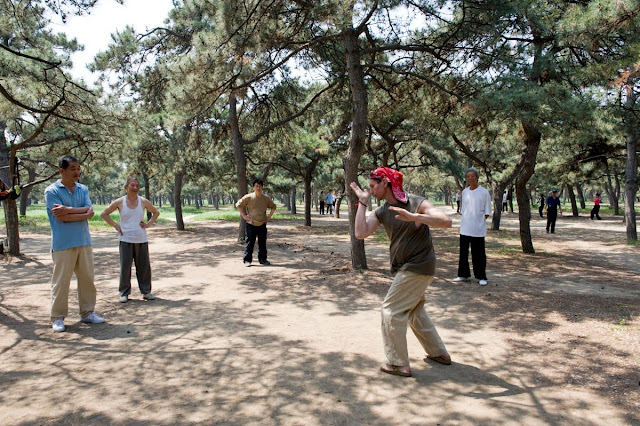Tuyu Vallery Mosque, Turpan
Taking a local bus in any country is always an ordeal when traveling with my camera bag. It has to stay with me at all times; solution is to purchase an extra seat, but in China with so many people this is a problem. Instead, I hitched a ride from Urumqi to Turpan with a private mini-bus for the Chinese day tourists, my luggage in full view, securely stored behind the driver.
Funny thing about these Chinese tourists, they detest the sun so much. Driving in our shaded cocoon with window curtains pulled tight I could not see any of the scenery leaving Urumqi until we arrived at the first viewing stop. A wind farm located about an hour outside the city. I had an attitude that I could care less and was not too thrilled in stopping, since we have these in California too.
Also annoying, was the tour operator who felt obliged to begin talking the moment we pulled away from any site and continued talking until we stopped at the next location. Then, she would gather us up, to begin explaining something in great detail. At one point, I am sure having run out of facts or anecdotes, she started singing for a few miles, to every-ones delight except mine. It’s these little things that convince me not to go on group tours.
Since Turpan lies below sea level its the hottest place in China, yet most of my fellow passengers where covered from head to toe in some version of a poly-fiber material. Each time we unloaded from the bus to visit a site, umbrellas opened, face masks put in place and cotton gloves where worn to help obscure any inch of skin from the sun’s deadly rays.
Finally, after much delays and unnecessary stops to visit, reconstructed forts, artificially restored old cities, museums and factory outlet stores we arrived in Turpan, for lunch. It’s my time to depart the group and the new friends I made and head for my hotel. In a few hours my greeting for “Hello” changed from the Mandarin, “Ni Hao” to “As-Salam 'Alaykum” now that I was in the mostly Islamic Uyghur, Xinjiang Province. It’s a simpler life of farm and family, where the sun shines 270 days a year.
Tomorrow is Day 24 and I am spending a few days in this charming town know for its grapes, famous for its raisons.





































